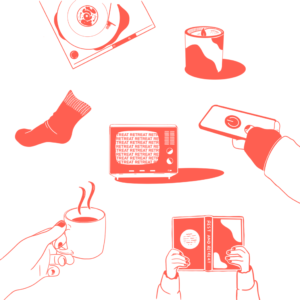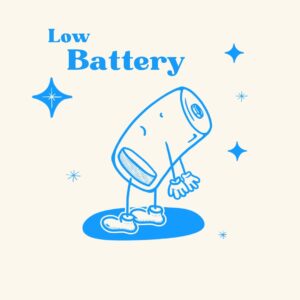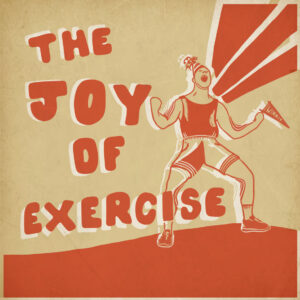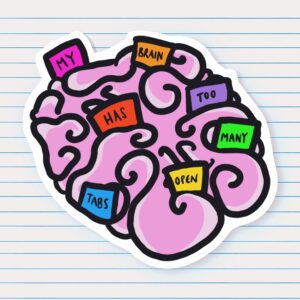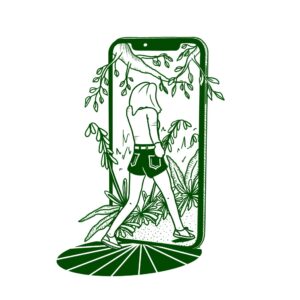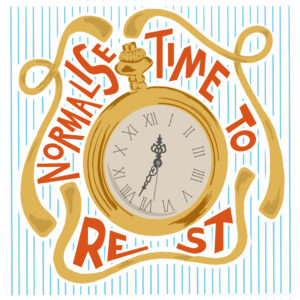The difference between busyness and productivity is this: Staying busy is what happens when you are caught constantly responding to the most urgent needs around you. Being productive is the result of actively addressing the most important items on your own to-do list.
Have you ever seen the GIF of a child holding onto a merry go round? They’re clinging onto the pole, being dragged around on the floor face first, going round and round with the ride. They aren’t enjoying it as someone should, they’re holding on and being pulled through, letting go is risky because the ride keeps on going and if they let go then they’ll miss out, but if they keep holding on in this position they’re going to hurt themselves. I’ll see if I can find it…
If I’m truly honest, I think I’ve lived most of my adult life like this, and thanks to COVID I’ve accidentally slipped into this as a default mode even more, forced to cling on no matter how uncomfortable because things just have to get done. There’s house work, work work, life admin, friends and family commitments, for me there’s also kids groups and all the things that come with that. Everyone is busy. It messes with our hormone balance, it causes us stress, and we just feel like we cannot let go and that makes us feel trapped and as if this never ending, constantly growing list of to dos will never get done, and worse, if we pause for a moment, take a holiday, it will pile up even more! How many of you reading this find they work longer hours in the run up to a holiday just so you can reduce the pile of emails that will be waiting for you when you get back?
Letting go of the ride
Having been unhappy at work for years, an opportunity came up to quit and try it on my own for awhile. Breaking at the seams, I needed to breathe, yet for some reason I didn’t, I kept hold of the ride. Rather than taking this opportunity to focus in, create space and let go, I automatically filled it with things. I took on a new course, I took on extra things around the house, and some how always found a way to be ‘productive’ even on days I hadn’t assigned anything to. Taking time for myself filled me with guilt, it made me feel lazy and selfish, I could think of a thousand ways I could be more useful with my time, and I couldn’t let go of the ride. Until one day I did. One day I knew something had to change, I was wasting the opportunity that I had been blessed with and if I didn’t learn to let go, then when would I?
Today I thought I’d share some of the steps I’ve taken to let go, and how I make sure to let go regularly, and because it’s me, there’s a whole lot of creative activities involved, and if you’re a creative organiser you’ll definitely love what I’ve got to say.
1. Planned my time
Take one day; share it into sections; to each section apportion its task: leave no stray unemployed quarters of an hour, ten minutes, five minutes, – include all; do each piece of business in its turn with method, with rigid regularity. The day will close almost before you are aware it has begun;
In my opinion Eliza’s last piece of advice to her sister is one that feels rather extreme, to mark every minute of your life down in task seems a wee bit too much, however Eliza is on to something, planning your time is important. You can read all the blogs and articles about this topic and number one is most probably this one. It is the scariest and most daunting part of the letting go process because it can seem overwhelming and impossible. But as my dear friend (I wish) Vivienne Westwood once had written over her shirt, be reasonable demand the impossible.
Here is where you creative organisers will thrive. I started with a list of what I needed to do in a day, and then in a week, I then wrote down the rough order they should happen in. I say rough because life is life, and it doesn’t always go to plan. By doing this I was able to see the small windows of opportunity, I could see where I could fit something about me into the day, and this began life as drawing. I would spend just fifteen minutes drawing, and I picked the time between breakfast and dressed, and sitting down to check emails/start my work day. I’d pour a brew, find a quiet pace and draw. No purpose, no intention to sell or show people, it was drawing just for me. Why did I pick drawing? For me, allowing myself to mindlessly wander through my inner thoughts via a pencil and paper is the best way for me to communicate what I’m feeling, sometimes they are words and others images. I’ve found, along with research, that creative activities such as drawing, painting and writing, allows you to express a part of yourself that doesn’t often have an opportunity to be seen. How could you organise your time?
2. Started small
This leads me very nicely onto my second point. Start Small. The smallest changes in time make big ones. It is often unsustainable and unreasonable to make radical, big, bold changes in your life, the burn out can be hard and fast, leaving you feeling like a failure. One of the best ways to develop new habits is to start off small. I found this act of making a small change in my day gave me the breathing space I needed, and the vent I needed to release myself from the day to day pressures, and what that did is allow me to see things differently. The stress wasn’t always as intense, the same problems became easier to handle, and other opportunities for time to myself became visible. I then realised where I could fit in five to ten minutes of happy exercise within my day, sometimes multiple times. I even saw evenings as a blessing to rest, not an opportunity to keep piling on the work, and suddenly my bedtime routine became one that actually allowed me to sleep better. If I’d have tried to give myself my own time to draw, exercise more, and develop a better sleep time all at once, it wouldn’t have been possible. It would have got too much and been too stressful. It needed the small drip and drop of little pieces to eventually carve things out of the way. You can’t become a river overnight, you must start off as a babbling brook. What small thing could you begin doing?
3. Check my intention
Most stuff doesn’t matter. Think about today’s date, two years ago. Can you remember what you were worried about then? No doubt you felt rushed, harried, behind. Two years later you have no idea why. So you can do yourself a favor and relax about whatever is bothering you now, two years early!
Often the merry go round of life kicks in again and it’s very easy to let the old habits settle in with the new ones. Too often this beautiful time to rest and ability to carve out time for yourself becomes another item on your to do list. When I start to look at my list and feel the pressure to make time for myself kick in, then I know something hasn’t gone right. It is time to pause, breathe and see what’s going on. I ask myself what’s filling my time, and does it matter? Do I need to be this rushed and stressed? Is there a task I could move to a different time to relieve the pressure? Carving out time for yourself shouldn’t become another pressure point in your life, it should be the joy and the light that allows everything else to feel lighter, and if it’s become something else then I need to recheck what’s going on. What’s filling your time and does it matter?
4. Decided what I needed
My morning routines are slightly different now, I still carve out that time, but through doing all of the above I learnt to listen to my body. No longer am I second guessing what I’d like to do, or running off a wish list of activities like ‘Read more, watch a film I’ve never seen, go for a run’ etc. That was important at the beginning because I felt so lost and a list helped to guide me (good news creative organisers), however because I was honouring this time and doing it more I began to hear what my body needed, what my mind needed. I learnt to recognise the signs that it needed rest, and could check back in with my schedule to quickly change a few things around to find the balance between getting tasks that absolutely needed to get done and to gift myself with that extra time to pause. This goes back to the rough timetable I spoke about at the beginning.
These days my morning routine, before I open any emails, is to spend a few minutes in prayer, then I do some stretches, these are normally ones that help with good posture. Drawing no longer enters into it. My body needs to move and it needs to feel ready. The praying clears my mind and keeps in me focus, and the stretches help to ease my body. The tension that builds up simply in the act of getting dressed, having breakfast and trying to get out get released and I’m free to start the work at peace. Without beginning my journey with small times of drawing I wouldn’t have reached this stage, and who knows what I’ll discover about myself over the coming year! What is it that you need?
5. Set Boundaries
Set boundaries at home and work. To have time for yourself, you need to advocate for yourself and your time. Practice self-awareness, so you understand what you have control over.
When I first set out as a freelancer it was very tempting and easy to see all unallocated time as availability. Just see an email, happen to have a spare half an hour you could easily fit that in, but it’s 7pm and long after your assigned working hours, kids are leaving you alone for a bit, you could just squeeze it in and that’s one less thing to think about tomorrow. I assign one day a month as research time, this is an opportunity to get out of the house, go somewhere different, maybe spend time in a library, visit an art gallery, and research. Research life, read new things and to use that to inspire my future projects. It is work and me time at the same time, it’s refuelling and without it I can’t design or write as well because the well of creativity needs filling up. However, when the week I’m due to go off on one of these days comes round and it’s suddenly filled with lots of projects that pay money it is very easy to sack that day off and fill it with work work.
But that isn’t helpful. No one is going to advocate for your own time, only you can do that. It’s important to prioritise it, to see it as something that is just as important and as valid as the work that pays, or gives you a chance to clean up. If not, you’ll only end up resenting the activity you’re doing and as the to do list in life is always growing, you’ll not get that time back, and so begins the merry go round, being dragged face first on the floor all over again.
Not only do boundaries help me to prioritise that time for myself but it also helps me to focus more on the activities I’m currently doing. When I’m working, I’m working, I’m not daydreaming of some artwork I could be making, and when I’m making art work or writing my stories I’m fully focused on that because this is the time to do that in, I’m not worrying about work, and when I’m looking after my children that is what I’m doing and I can be fully present for them. Boundaries helps to keep you fully in the time slot you’re in, you aren’t spreading yourself thin over many at the same time. What boundaries do you need to set up?
I hope this has been helpful, but I guess the real question is…are you ready to let go?


